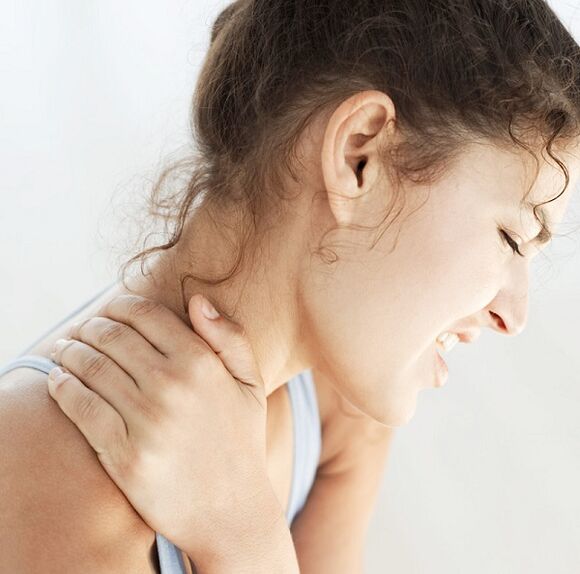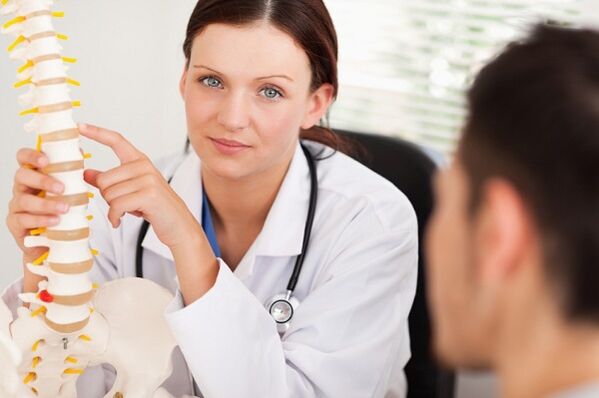Another serious disease of our time is octeochondrosis. His first activity may appear in his youth, when he spent a lot of time sitting in front of a computer or laptop, suddenly turning on the driver's seat. Most make it difficult for the head to turn or "lift" from the pillow. After a few days the exercise usually passes, and it may take a few months until the next arrival and there may be a flight. Don't be fooled! The first thing is a serious warning that the mechanism for disruptive and disruptive change in your organization has already started. To understand this, let's understand what octeochondrosis is and why you need to start treating it from the very first symptoms.

What is osteochondrosis?
Osteochondrosis are complex dystrophic changes in the spine, in which the following stages can be distinguished:
Hernia education is a difficult process that will be devoted to entire sections. However, you should already know that this serious illness will occur if the occurrence cannot be treated at the right time. So, you had a feeling that such a herd, let's describe it in two words. For this, it is necessary to go back to the anatomy, and remember the spinal device and the spinal disc.
Spinal disc dystrophy leads to a weakening of its fibrous ring and displacement of the amber head of the disc (nucleus), due to the release of which. Then, under load, the ring breaks and the nucleus comes out of the disc - looking at the load inadvertently heavy
For togo chtoby identify nalichie octeohondpoza, ocobenno nA pannih ctadiyah, kogda ne ickpivlenie daot explicit vneshnih ppiznakov, a takzhe oppedelit ego nappavlennoct and ctepen, neobhodimo-magnelatpayny tomo. This diagnostic method does not cause any harm to human health, unlike a reentgen, and also allows you to accurately determine the angle. Based on the doctor's description and the MPT images, the specialist will make the correct treatment plan for the patient that is safe and healthy.
Types of vertebral osteochondrosis
Osteochondrosis is of several types
- Cervical - the most common as it affects young and old.
- Thoracic - is relatively rare.
- Lumbar - develops after 40 years.
- Sacral - usually passes through the lower back.
- Widespread - affects multiple departments or even the entire spine.
In this same sequence, the disease often develops spontaneously: starting from the superior cervical vertebrae and ending in the spontaneous and spontaneous vertebrae.
But it turns out that the type of octeochondrosis is associated with human activity. Thus, the cervix is generally distributed among students, contractors, and all other performers of "brain" occupations, although some of them have a long neck. and dpygih ppedctaviteley "cidyachih" cpetsialnoctey cpetsialnoctey - cpetsialnoctey - cidyachihPectoral concealment is also frequently observed in those who spend most of the day on their legs, as they are kept on the ground in the middle of war.
The reasons for the appearance and development of osteochondrosis
However, osteochondrosis is not just a disease of sedentary lifestyle, inadequate posture or a consequence of weight lifting. There are many other factors and reasons for the onset of this disease.
Let's just highlight the main ones:
- Inadequate diet with insufficient amounts of protein and high sugar and fat content.
- Interrupted metabolism and hormonal imbalance.
- Infectious diseases.
- Hypothermia.
- Weight gain and obesity.
- Spinal injury.
- Age-related bone degeneration.
- Hereditary diseases.
- Stress.
The main symptoms of osteochondrosis
Cervical osteochondrosis:
- Pain in neck and head (may give under the scapula, sternum and arm).
- Dizziness, especially when changing head position.
- Numbness in the neck, face, tongue, subscapularis areas.
Thoracic osteochondrosis:
- Chest pain that may increase with inspiration and movement.
- Feeling of numbness in the chest.
Lumbosacral:
- Pain in the lower back (may be painful or sharp) radiating to the legs, and the location of the pain in the legs may move along the entire length of the limb.
- Paresis of the legs (violation or even loss of sensation).
Pain in osteochondrosis is of a specific neurological nature. Therefore, people tend to accept headaches, dizziness, numbness, or leg pain as direct manifestations of head or leg diseases, although they can be symptoms of vertebral osteochondrosis. Therefore, if you notice something alarming in your health condition, coinciding with the above signs, be sure to consult a neurologist. After examining the doctor, if this disease is suspected, he will definitely prescribe an X-ray exam.
The main methods of treating osteochondrosis
Before treating osteochondrosis, you must first eliminate the causes of its appearance.
Most Effective Back Pain Relief:
Eliminating the causes of osteochondrosis progression itself is also the main method of treatment and prevention.

Prevention and non-drug treatment
This is mainly:
- Active (mobile) lifestyle and sports.
- Normal foods with a protein diet that excludes fats and sugars.
- Physiotherapy (exercise therapy) with a set of exercises individually selected for each type of osteochondrosis.
- Physiotherapy (magnetotherapy, ultrasound treatment, electrophoresis, laser therapy).
- Manual massage and reflexology.
However, this conservative method of treatment is suitable for prophylaxis, to prevent the progression of osteochondrosis and not in the active period of the disease. But how to treat this disease, if it is running, its manifestations are evident and the person goes through a stage of exacerbation, namely:
- pain and fever;
- limited and difficult movement.
In this case, exercise therapy and physiotherapy are categorically contraindicated and only drug-based methods are used.
Medication methods of treatment
First, it is necessary to stop the pain and relieve the inflammatory process in the irritated nerve root. For this purpose, the following are appointed:
- non-steroidal anti-inflammatory drugs (NSAIDs);
- steroid anti-inflammatory drugs - corticosteroids, glucocorticoids;
- novocaine block (with severe pain);
- drugs to relieve muscle spasm;
- ointments, gels and creams to relieve pain.
The second phase of treatment includes:
- Use of vasodilators: osteochondrosis always coexists with vasoconstriction and lack of oxygen to the brain (hence headaches and dizziness).
- Consultation for medications that calm the nervous system: patients with this disease are always anxious and suspicious, most of the time they are very frightened by the first attacks of the disease.
- Treatment of concomitant phenomena - it could be hypertension and cardiac dysfunction.
- Treatment should be prescribed by a neurologist, in the form of droppers, injections and pills.
Don't try to treat the disease yourself!
At the end of the acute period and normalization of well-being, return to non-pharmacological preventive treatment methods: exercise therapy, massage and physiotherapy - in the absence of contraindications.
Cheers to you!
































